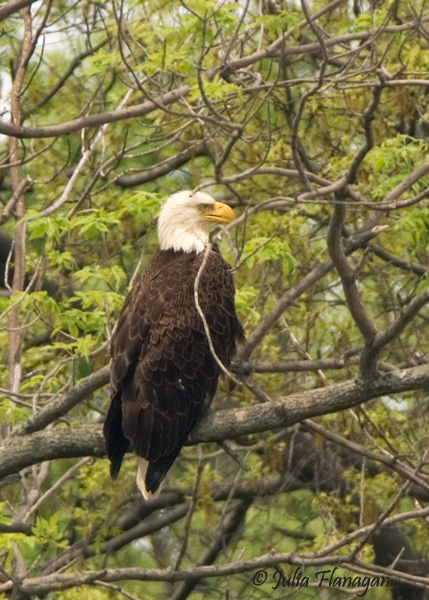|
|
||
|
Bald Eagle The Bald Eagle is the second largest North American bird of prey. Adult birds have a distinctive white head and white tail which are offset against a dark brown body and wings. It’s broad wings are used for a flapping-soaring flight. Immature Bald Eagles are brown, speckled with white until they reach sexual maturity around the age of five. Bald Eagles prefer fish over other types of prey, however, they will hunt a variety of mammals, birds and reptiles. They are opportunistic and will scavenge carcasses, campsites and landfills. The Bald Eagle's natural range covers most of North America, including most of Canada, all of the continental United States, and northern Mexico. It is the only sea eagle endemic to North America. Occupying varied habitats from the bayous of Louisiana to the Sonoran Desert and the eastern deciduous forests of Quebec and New England, northern birds are migratory, while southern birds are resident, remaining on their breeding territory all year. Bald Eagles reach sexual maturaty at four or five years of age. When they are old enough to breed, they often return to the area where they were born. It is thought that Bald Eagles mate for life. However, if one member of a pair dies or disappears, the other will choose a new mate. A pair which has repeatedly failed in breeding attempts may split and look for new mates. Their nests are the largest of any bird in North America. It is built out of branches, usually in large trees near water. It is used repeatedly over many years and new materials are added each year. Because of this a nest may eventually be as large as 13 ft deep and 8 ft across. When breeding where there are no trees, the Bald Eagle will nest on the ground. Eagles produce between one and three eggs per year. It is, however, rare for all three chicks live to maturity. Both the male and female take turns incubating the eggs. The other parent will hunt for food or look for nesting material. The average lifespan of Bald Eagles in the wild is around 20 years, with the oldest living to be about 30. |
Home | Upcoming Events | About Us | Resource Issues | News | Local Contacts Maps | Photos | Publications | Youth Education | FAQ's | Links | Membership |






